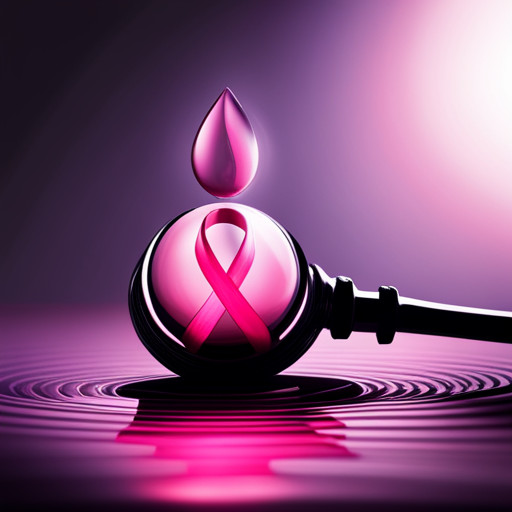Camp Lejeune Water Contamination Breast Cancer Risk for Children
The water contamination at Camp Lejeune from 1953-1987, a U.S. Marine Corps base, has raised grave health concerns over the ensuing years. Research indicates a link between the volatile organic compounds and PFAS forever chemicals and the occurrence of cancer, including breast cancer, in children born at the base.

This article explores the potential health risks, the proposed Camp Lejeune Justice Act, and the ongoing legal proceedings regarding the contamination.
Key Takeaways
- Camp Lejeune tap water was contaminated with volatile organic compounds (VOCs) and PFAS forever chemicals.
- Children born at Camp Lejeune between 1953 and 1987 may be at risk of developing breast cancer.
- Drinking Camp Lejeune water during pregnancy is a probable cause of breast cancer in children.
- The Camp Lejeune Justice Act allows certain individuals to file claims for compensation.
Understanding the Camp Lejeune Water Contamination

The contamination of tap water at Camp Lejeune with volatile organic compounds (VOCs) and PFAS forever chemicals, which were present at levels thousands of times greater than deemed safe, has been acknowledged by the Marine Corps, Navy, and Department of Defense. This acknowledgment has led to its designation as a Superfund site by the Environmental Protection Agency (EPA).
This contamination has resulted in profound health effects, including the development of cancers and other diseases for those exposed. The government response to the Camp Lejeune water contamination has been considerable, yet slow. Legislation such as the Camp Lejeune Justice Act has been introduced to provide compensation for victims.
Despite these measures, many believe that more needs to be done to fully address the extensive health effects of this contamination.
The Link Between Breast Cancer and Contaminated Water

Exposure to contaminated drinking water has been linked to an increased likelihood of developing malignant mammary gland tumors, particularly in individuals exposed during their developmental years. The environmental impact of such contamination, as seen in the case of Camp Lejeune, has far-reaching health consequences.
Research indicates that these toxins, including volatile organic compounds and PFAS, can disrupt endocrine functions, thereby increasing cancer risk. The latency stage of breast cancer, often spanning between ten to twenty years, complicates efforts to directly link the disease to earlier exposure.
However, the elevated incidence of breast cancer in individuals exposed to Camp Lejeune's contaminated water during their developmental years provides compelling evidence of the connection. Such findings underscore the critical need for vigilance in monitoring and mitigating environmental toxins.
The Camp Lejeune Justice Act and Its Impact

Enactment of the aforementioned justice act has opened avenues for affected individuals to seek compensation for health damages linked to toxic exposure.
The impact of the Camp Lejeune Justice Act on affected individuals is transformative, offering a tangible route to redress decades of suffering, illness, and loss.
The Act acknowledges the inalienable right of victims to seek justice for Camp Lejeune water contamination incidents and provides a legal foundation for claims.
It empowers survivors to confront the institutions that failed to safeguard their well-being.
The Act also serves as a critical conduit for the dissemination of vital information pertaining to contamination exposure risks, thus extending its influence beyond mere compensation, towards prevention and awareness.
Updates on the Camp Lejeune Water Lawsuits

Recent developments in the litigation landscape have highlighted the ongoing struggles of survivors seeking redress for health issues attributed to toxic exposure at a military base. The status of compensation claims filed under the Camp Lejeune Justice Act suggests a complex process, with many survivors encountering challenges in securing adequate compensation.
The legislation permits certain individuals to file claims, but thousands are still waiting for their cases to be adjudicated. Meanwhile, research continues to reveal the severe long term health effects of the contamination. Diseases such as male breast cancer, which is rare yet prevalent among Camp Lejeune veterans, underline the urgency for justice.
These developments underscore the need for a thorough investigation to ensure survivors receive adequate compensation for their suffering.
Legal Support for Victims of the Contamination

Legal assistance for victims of toxic exposure is provided by various law firms specializing in personal injury claims, who are adept at navigating the complex landscape of federal law tort claims. These firms offer invaluable support to individuals pursuing legal action against entities responsible for exposure to hazardous substances, such as the water contamination incident at Camp Lejeune.
These cases often hinge on establishing a clear connection between exposure and subsequent health issues, a complex task requiring extensive research and thorough knowledge of related laws. Successful claimants may receive financial compensation, with eligibility dependent on a number of factors, including the extent of exposure and the severity of health effects.
Despite the challenges, these legal efforts are crucial in seeking justice for victims of toxic exposure.
Frequently Asked Questions
What Measures Have Been Taken to Rectify the Water Contamination at Camp Lejeune?
To rectify the water contamination at Camp Lejeune, measures such as contamination prevention strategies, policy changes, and remediation activities have been implemented. This includes the EPA's designation of the site as a Superfund for extensive cleanup.
Are There Ongoing Health Monitoring Programs for Individuals Exposed to the Contaminated Water at Camp Lejeune?
Ongoing health monitoring programs for individuals exposed to the Camp Lejeune water contamination are indeed in place, focusing on exposure duration and health effects. These programs also underscore remediation efforts to mitigate future health risks.
How Can Individuals Who Were Exposed to the Contaminated Water but Are Not Showing Symptoms Get Tested for Potential Health Risks?
Individuals exposed to contamination, yet asymptomatic, can undergo testing for potential health risks by seeking preventive measures such as regular health screenings and biomonitoring to detect contamination effects before they manifest into severe conditions.
Besides Breast Cancer, What Other Health Conditions Are Children Born at Camp Lejeune Between 1953 and 1987 at Risk of Developing?
Children born at Camp Lejeune between 1953 and 1987 may also be at risk of developing leukemia, non-Hodgkin's lymphoma, and birth defects, due to genetic implications from the water contamination, as evidenced by ongoing lawsuits.
How Does the Camp Lejeune Justice Act Impact Individuals Who Were Not Born at the Camp but Resided There During the Period of Contamination?
The Camp Lejeune Justice Act implications extend beyond birth at the camp, allowing residents during the contamination period to file compensation claims, thus broadening the spectrum of individuals eligible for monetary remediation.

This post has been generated by AI and was not reviewed by editors. This is Not legal advice. Please consult with an attorney.




